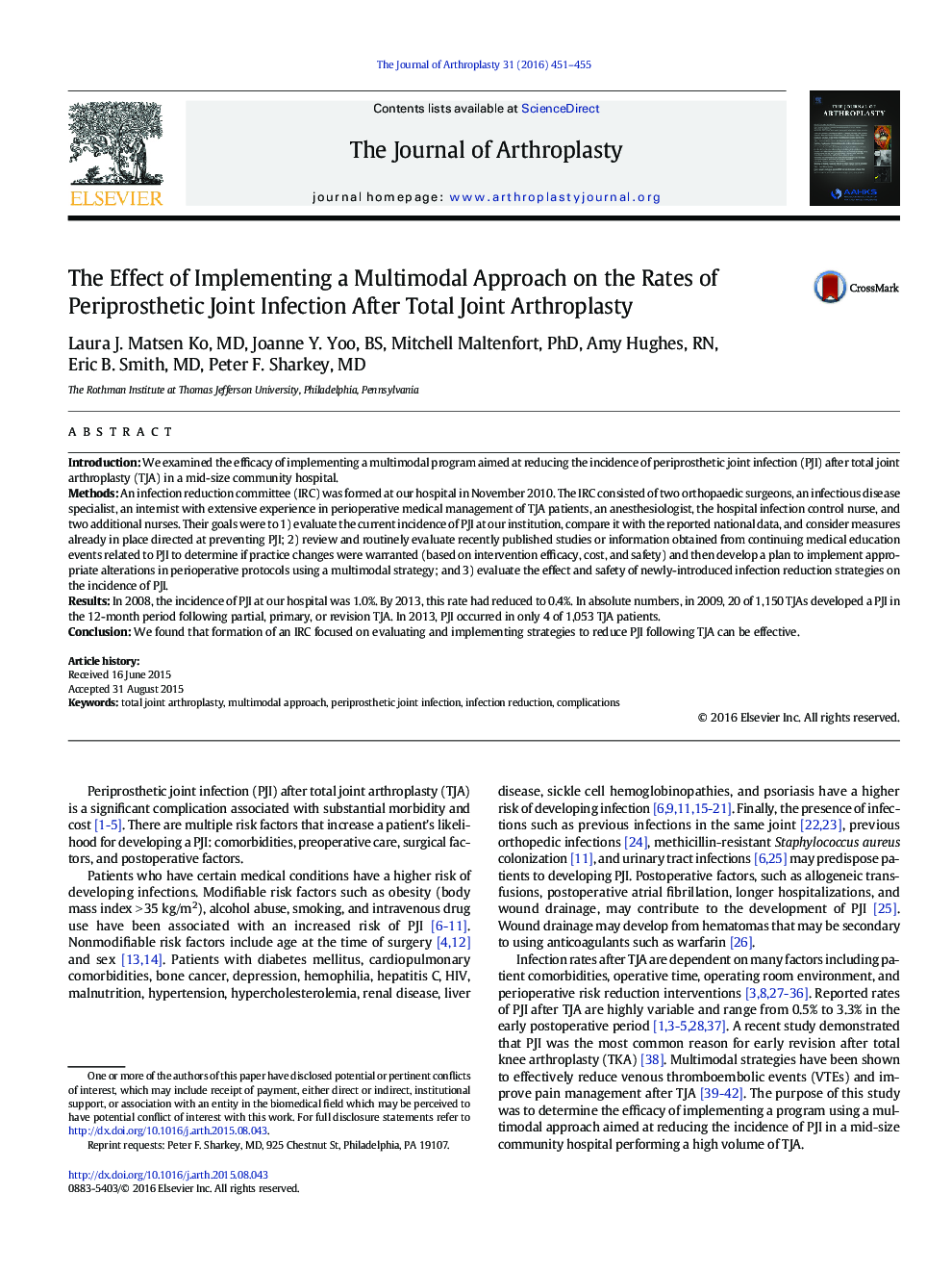| Article ID | Journal | Published Year | Pages | File Type |
|---|---|---|---|---|
| 4059933 | The Journal of Arthroplasty | 2016 | 5 Pages |
IntroductionWe examined the efficacy of implementing a multimodal program aimed at reducing the incidence of periprosthetic joint infection (PJI) after total joint arthroplasty (TJA) in a mid-size community hospital.MethodsAn infection reduction committee (IRC) was formed at our hospital in November 2010. The IRC consisted of two orthopaedic surgeons, an infectious disease specialist, an internist with extensive experience in perioperative medical management of TJA patients, an anesthesiologist, the hospital infection control nurse, and two additional nurses. Their goals were to 1) evaluate the current incidence of PJI at our institution, compare it with the reported national data, and consider measures already in place directed at preventing PJI; 2) review and routinely evaluate recently published studies or information obtained from continuing medical education events related to PJI to determine if practice changes were warranted (based on intervention efficacy, cost, and safety) and then develop a plan to implement appropriate alterations in perioperative protocols using a multimodal strategy; and 3) evaluate the effect and safety of newly-introduced infection reduction strategies on the incidence of PJI.ResultsIn 2008, the incidence of PJI at our hospital was 1.0%. By 2013, this rate had reduced to 0.4%. In absolute numbers, in 2009, 20 of 1,150 TJAs developed a PJI in the 12-month period following partial, primary, or revision TJA. In 2013, PJI occurred in only 4 of 1,053 TJA patients.ConclusionWe found that formation of an IRC focused on evaluating and implementing strategies to reduce PJI following TJA can be effective.
